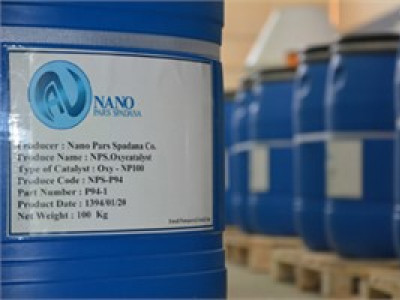| Spadana Nano Pars Co. |

| Registration Date | 14 Aug 2016 |
| Revision Date | 19 Apr 2018 |
| Share |
Petroleum Well Treatment Product Number : NP-3
Oxychlorination CatalystPores average size about 10 nm Specific surface area 275 m2/g Good distribution of precipitates on the catalyst In mesoporous materials, area to volume ratio considerably increase compared to bulk materials. The upper specific area of the nanopores created in catalyst, cause effective surface area and increase the catalyst activity.
The impregnated CuCl2/Alumina is used for ethylene dichloride (C2H4CL2) production in the oxychlorination process. The copper based catalyst conventionally is used in oxychlorination process. The oxychlorination contains three steps as follow: First step is copper chloride reduction. Second is reoxidation by O2 and third, chlorination by HCL. The mesoporous gamma alumina is one of the created phases during the alumina production, with 2 to 50 nm pore size. This is used as the conventional catalyst in heterogenic reactions because of upper specific surface, high porosity ratio, good thermal stability and uniform porosity dispersion.